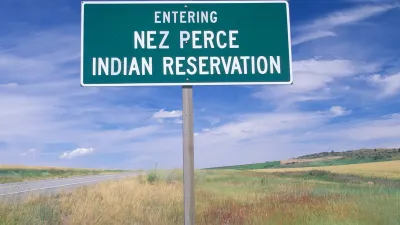Kaid Benfield returns to his popular blog at the NRDC's Switchboard site after a three-week hiatus, with thoughts on the purpose of his writings and how "overly familiar vocabulary can lead to overly familiar thinking."
Returning from a restorative, and introspective, break from writing, Benfield muses on the role of our common vocabulary, and his role in particular, in advancing (or obfuscating) a professional discourse. Diving into this summer's simmering debate over the use of the term "vibrant," Benfield swears off his own use of the term, and promises to retire "urbanism," as well, for good measure.
"While I am definitely pro-city," writes Benfield, "my first problem with urbanism
is that in some circles it has taken on the air of a cult, providing a
verbal badge of identification....I would rather discuss what
makes a particular solution appropriate to a particular situation than
apply a formula... I also
believe that, just as the principles of smart growth have gotten stale,
so have the overlapping principles of urbanism."
"I want this blog – this is post number 1,125 – to be not about
advocating any script or preset system of belief but instead about
thought, the pursuit of truth and, yes, sometimes about finding a balance
among the various competing interests – planetary health, local
environmental health, individual aspirations, community, solitude,
economy, equity, the whole messy gumbo – that, pretend as we may, cannot always be aligned when it comes to
cities, neighborhoods or the environment. "Isms" of any sort can get in
the way of those objectives."
FULL STORY: Cities, sustainable placemaking, & the careful use of words

Alabama: Trump Terminates Settlements for Black Communities Harmed By Raw Sewage
Trump deemed the landmark civil rights agreement “illegal DEI and environmental justice policy.”

Study: Maui’s Plan to Convert Vacation Rentals to Long-Term Housing Could Cause Nearly $1 Billion Economic Loss
The plan would reduce visitor accommodation by 25% resulting in 1,900 jobs lost.

Planetizen Federal Action Tracker
A weekly monitor of how Trump’s orders and actions are impacting planners and planning in America.

Waymo Gets Permission to Map SF’s Market Street
If allowed to operate on the traffic-restricted street, Waymo’s autonomous taxis would have a leg up over ride-hailing competitors — and counter the city’s efforts to grow bike and pedestrian on the thoroughfare.

Parklet Symposium Highlights the Success of Shared Spaces
Parklets got a boost during the Covid-19 pandemic, when the concept was translated to outdoor dining programs that offered restaurants a lifeline during the shutdown.

Federal Homelessness Agency Places Entire Staff on Leave
The U.S. Interagency Council on Homelessness is the only federal agency dedicated to preventing and ending homelessness.
Urban Design for Planners 1: Software Tools
This six-course series explores essential urban design concepts using open source software and equips planners with the tools they need to participate fully in the urban design process.
Planning for Universal Design
Learn the tools for implementing Universal Design in planning regulations.
Caltrans
Smith Gee Studio
Institute for Housing and Urban Development Studies (IHS)
City of Grandview
Harvard GSD Executive Education
Toledo-Lucas County Plan Commissions
Salt Lake City
NYU Wagner Graduate School of Public Service



























